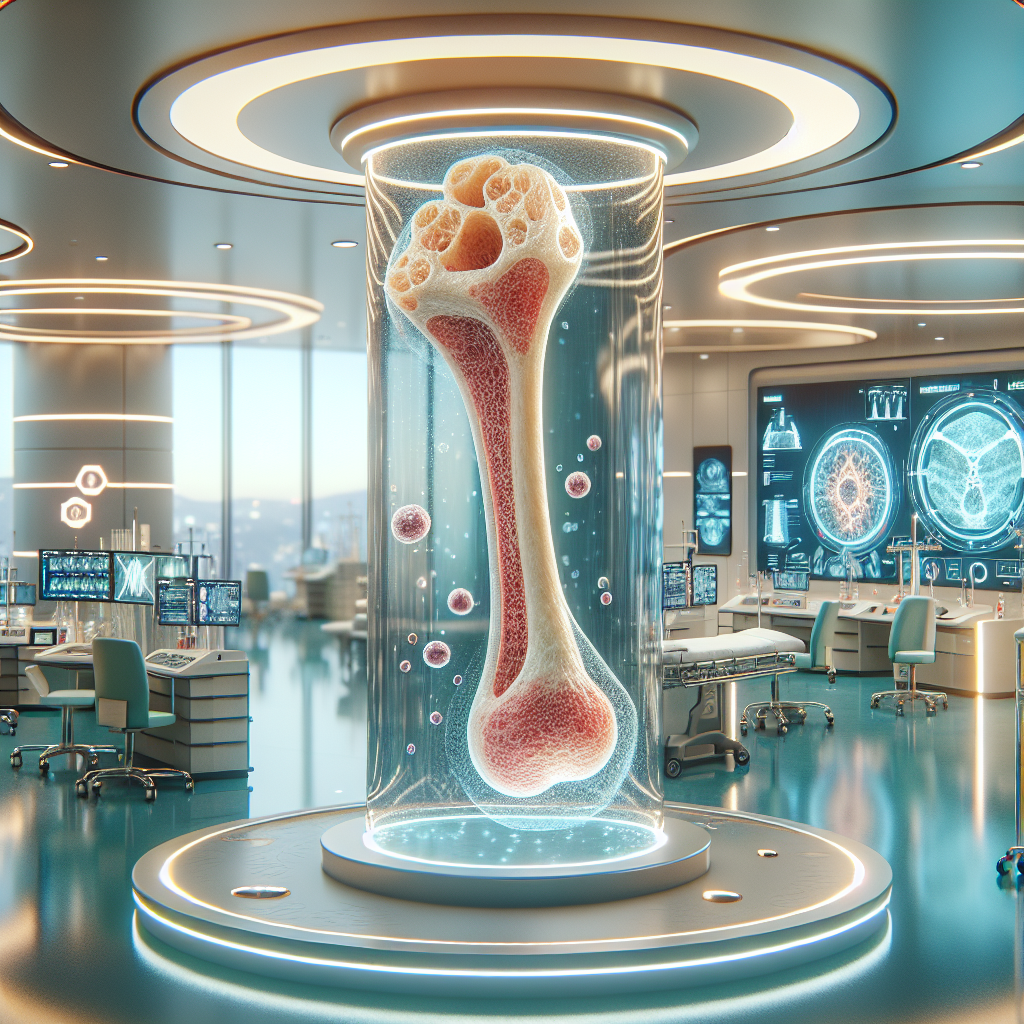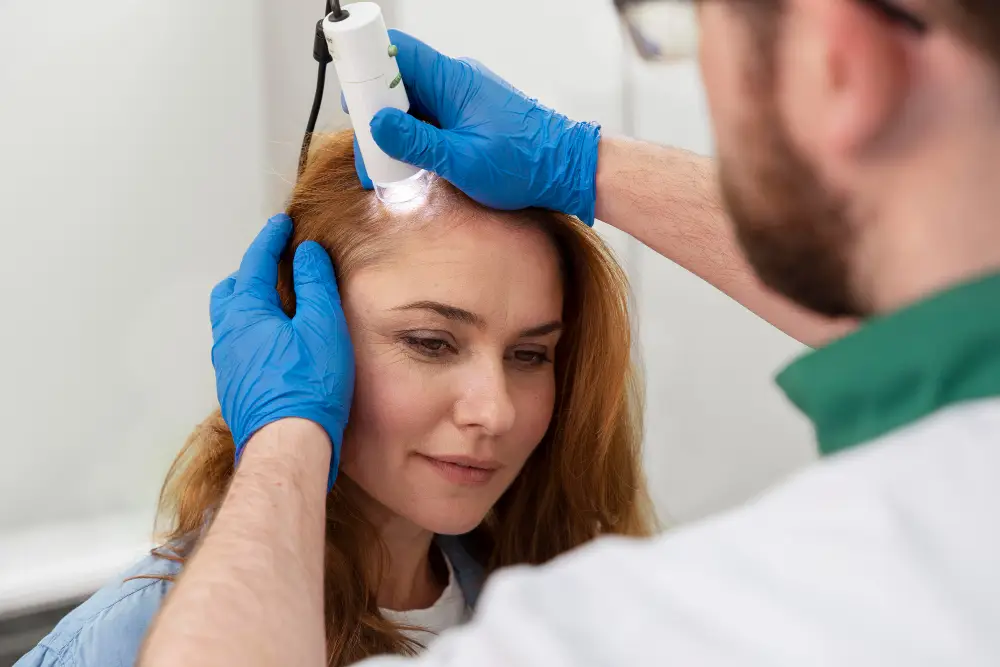
Understanding Osteopetrosis Stem Cell Treatment: Your Pathway to Clarity
By the Regencord Communications Team, Pereira, Colombia
Key Takeaways
- Osteopetrosis is a rare, complex bone disorder affecting bone remodeling, potentially leading to severe health complications.
- Hematopoietic Stem Cell Transplantation (HSCT) is a critical therapeutic pathway for severe forms, aiming to restore proper bone function.
- Navigating treatment for a rare disease demands deep understanding and holistic support, especially when considering international options.
- Pereira, Colombia, offers a compelling environment for advanced medical care, combining modern facilities with a supportive, cost-effective patient experience.
- The team at Regencord in Pereira is dedicated to ethical education, transparent care coordination, and empowering patients with comprehensive information for informed decisions.
Introduction: Navigating the Complexities of Osteopetrosis
For individuals and families facing a diagnosis of osteopetrosis, the journey can feel overwhelming. This rare genetic bone disorder, characterized by abnormally dense but brittle bones, presents unique challenges and requires highly specialized approaches. When considering treatment options, particularly advanced therapies like hematopoietic stem cell transplantation (HSCT), clarity, accurate information, and empathetic support are paramount.
At Regencord in Pereira, Colombia, our communication team understands these complexities. We are dedicated to providing educational resources that empower you to make informed decisions about your health. This article serves as a comprehensive guide to understanding osteopetrosis, the potential of stem cell treatment, and how an international patient journey can be managed with transparency and support. Our aim is to address your questions and concerns, offering a pathway to understanding without asserting clinical superiority or guaranteeing outcomes.
The Stakes & Critical Implications of Osteopetrosis

Osteopetrosis, often referred to as “marble bone disease,” is not a single condition but a group of inherited disorders where bones become abnormally dense. This density arises from a defect in osteoclasts, specialized cells responsible for the crucial process of bone remodeling – the natural breakdown and reabsorption of old bone tissue. When osteoclasts don’t function properly, old bone accumulates, making bones excessively dense but paradoxically fragile and prone to fractures.
Understanding the Impact of Impaired Bone Remodeling
The implications of this impaired bone remodeling extend far beyond bone fragility. As the U.S. National Institutes of Health (NIH) highlights, the overgrowth of bone can narrow cavities within the body, leading to a range of severe complications:
- Bone Marrow Failure: The increased bone density can encroach upon the bone marrow space, impairing the production of blood cells and leading to anemia, easy bruising, and increased susceptibility to infections.
- Neurological Issues: Overgrowth of bone in the skull can compress cranial nerves, resulting in vision loss, hearing impairment, and facial paralysis.
- Growth Failure: Children with severe forms may experience stunted growth and developmental delays.
- Recurrent Fractures: Despite their density, osteopetrotic bones are brittle, leading to frequent and painful fractures.
- Dental Abnormalities: Impaired bone metabolism can also affect tooth development.
Given the wide array of potential systemic complications, early and effective intervention is often crucial. The rarity of the condition (affecting approximately 1 in 200,000 people globally for the severe infantile form, according to a WHO-related report on rare diseases) means that finding comprehensive, specialized care can be a significant challenge for families.
Understanding Hematopoietic Stem Cell Transplantation (HSCT)

For the most severe forms of osteopetrosis, particularly the malignant infantile type, hematopoietic stem cell transplantation (HSCT) has emerged as a key therapeutic strategy. This complex procedure aims to address the root cause of the bone remodeling defect.
How HSCT Works to Address Osteoclast Defects
The fundamental principle of HSCT in osteopetrosis is to replace the patient’s faulty hematopoietic stem cells, which give rise to defective osteoclasts, with healthy ones from a compatible donor. These donor stem cells, once engrafted, are expected to differentiate into functional osteoclasts capable of restoring normal bone resorption. This process helps to:
- Restore Bone Remodeling: Healthy osteoclasts begin to break down the excess, dense bone, potentially reducing bone fragility and freeing up bone marrow space.
- Alleviate Compression: As bone is reabsorbed, pressure on nerves and the bone marrow can lessen, mitigating neurological complications and improving blood cell production.
- Improve Quality of Life: By addressing the underlying defect, HSCT can potentially improve a patient’s overall health and development.
Research extensively documented in PubMed-indexed peer-reviewed journals consistently demonstrates that successful HSCT can significantly alter the natural history of osteopetrosis, especially when performed early in life. It’s a procedure that requires meticulous planning, a highly skilled medical team, and comprehensive post-transplant care.
The Conventional Approach to Osteopetrosis in a Global Context

In many regions globally, including countries like Colombia, the approach to osteopetrosis focuses on early diagnosis, comprehensive supportive care, and, where appropriate, curative interventions like HSCT. In Colombia, the Ministry of Health (Ministerio de Salud y Protección Social) and INVIMA (Instituto Nacional de Vigilancia de Medicamentos y Alimentos), the national health regulatory agency, oversee the standards of medical care and ensure that hospitals and clinics adhere to rigorous protocols.
Navigating Treatment Pathways and Challenges
For patients in various geographic contexts, the conventional pathway often involves:
- Diagnosis: Early identification through genetic testing and imaging.
- Supportive Care: Managing symptoms such as fractures (orthopedic care), anemia (transfusions), and neurological complications (neurosurgery, ophthalmology, audiology).
- Medical Management: Some forms of osteopetrosis might benefit from medications, though these typically address symptoms rather than the underlying bone remodeling defect.
- Surgical Interventions: To decompress nerves or correct deformities.
- Hematopoietic Stem Cell Transplantation (HSCT): Considered for severe forms to address the primary osteoclast defect.
One of the primary challenges for patients globally is the rarity of osteopetrosis itself. This can lead to delays in diagnosis and difficulty in finding medical teams with deep experience in managing the condition and performing specialized procedures like HSCT. The decision to pursue HSCT is significant, involving extensive evaluation, donor matching, and a commitment to a demanding treatment and recovery period. For families, the emotional, logistical, and financial burdens can be substantial.
The Pereira, Colombia Advantage for Advanced Care

When facing a complex diagnosis like osteopetrosis, the search for advanced, accessible care often leads patients to explore international options. Pereira, Colombia, has emerged as a compelling destination for those seeking high-quality medical services, particularly for specialized treatments. The team at Regencord in Pereira emphasizes the unique contextual advantages that make this city an attractive choice, ensuring that patients receive comprehensive support beyond the clinical aspects of their care.
Modern Infrastructure and Professional Standards
Colombia’s healthcare system is recognized for its robust infrastructure and highly trained medical professionals. The nation’s regulatory bodies, such as the Colombian Ministry of Health and INVIMA, ensure that medical facilities and procedures meet stringent national and often international standards. Pereira, as a significant regional hub, boasts modern hospitals and clinics equipped with advanced technology and staffed by medical teams who are often internationally trained and adept at managing complex conditions, including those requiring advanced procedures like hematopoietic stem cell transplantation. This commitment to maintaining high standards provides a foundation of reliability and competence.
A Holistic Patient Journey Focused on Support
For patients requiring extended care, especially for conditions as serious as osteopetrosis, the journey extends far beyond the operating room. Our experience shows that patients seeking complex care often grapple with information overload and emotional fatigue. The most critical aspect of their journey is not just the medical procedure itself, but the holistic support system that anticipates and alleviates logistical, emotional, and communication challenges from the moment of initial inquiry through post-treatment care.
The patient advocacy team working with Regencord in Pereira is acutely aware of the unique needs of international patients. We facilitate every step: from travel arrangements and local accommodation to on-the-ground support and language assistance. This integrated approach ensures that patients and their families can focus on healing and recovery, rather than being burdened by logistical complexities. We believe that a truly effective approach integrates patients into a supportive ecosystem that normalizes their experience while empowering them with knowledge.
A Conducive Environment for Healing and Recovery
Beyond the clinical excellence, Pereira offers a unique socio-geographic advantage that significantly enhances the patient and family experience. Nestled in Colombia’s coffee region, the city provides a serene and recovery-conducive environment. This is a deliberate contrast to the often-stressful, fast-paced atmosphere of larger, more congested medical hubs. The cultural warmth and hospitality characteristic of the region, combined with a lower cost of living, contribute to a less psychologically burdensome long-term stay. This blend creates a distinct advantage for healing and recuperation, allowing patients to recover in a peaceful setting that supports their overall well-being.
Considering care in Pereira is not about seeking a “miracle” but about finding a well-regulated, supportive, and accessible environment where high-quality medical care is thoughtfully integrated into a comprehensive patient experience. It’s about empowering patients with choices that prioritize both their medical needs and their holistic well-being.
The Regencord Osteopetrosis Navigator: Your Practical Resource

To help you navigate the complexities of osteopetrosis and potential stem cell treatment pathways, the Regencord team has developed “The Regencord Osteopetrosis Navigator.” This practical resource is designed as a dynamic checklist and information hub, intended to guide you through the various considerations when evaluating treatment options and planning an international medical journey.
What The Navigator Offers:
- Pre-Evaluation Checklist: A step-by-step guide to gathering necessary medical records, understanding diagnostic reports, and preparing for initial consultations.
- Treatment Pathway Explanations: Clear, concise explanations of what hematopoietic stem cell transplantation involves, from donor matching to post-transplant care, based on information from reliable sources like ClinicalTrials.gov and NIH guidelines.
- Logistical Planning Aid: Practical advice on travel documentation, accommodation options in Pereira, transportation, and considerations for extended stays.
- Question Prompts for Medical Teams: Suggested questions to ask during your confidential case review to ensure all your concerns are addressed.
- Post-Treatment Care Considerations: Guidance on what to expect during recovery and how to coordinate follow-up care, whether in Pereira or back in your home country.
The Regencord Osteopetrosis Navigator is built on our commitment to patient empowerment. It aims to demystify the process and provide a tangible tool for clarity and control during what can be an emotionally taxing time. This tool is part of our dedication to providing a structured and supportive patient experience.
Our Regenerative Philosophy & Approach
At Regencord in Pereira, Colombia, our approach is rooted in a regenerative philosophy that prioritizes understanding the underlying mechanisms of disease and supporting the body’s natural capabilities for repair and restoration. For conditions like osteopetrosis, where a fundamental cellular defect impairs bone remodeling, the focus shifts to comprehensive strategies that aim to re-establish healthy physiological functions.
Educational, Non-Promissory Care
Our commitment to regenerative principles means we emphasize advanced medical pathways that leverage the body’s intrinsic healing potential, such as hematopoietic stem cell transplantation for osteopetrosis. We focus on educational, evidence-based communication, drawing from authoritative sources like PubMed-indexed journals and the NIH, to explain complex treatments clearly and responsibly. We explicitly avoid making unverified claims or guaranteeing specific outcomes, recognizing that each patient’s response is unique.
Our team believes in fostering an environment of transparent communication where patients and their families are fully informed about their condition, treatment options, potential benefits, and inherent considerations. This philosophy extends to:
- Individualized Case Review: Every patient’s situation is unique. Our team facilitates a thorough, confidential review of your medical history to understand your specific needs and determine if the regenerative medicine pathways available through Regencord in Pereira are suitable for you.
- Integrated Support: From the moment of initial inquiry, we provide seamless support, coordinating medical consultations, travel logistics, and ongoing communication. This holistic approach ensures that the patient journey is as smooth and stress-free as possible.
- Empowerment Through Knowledge: We believe that an informed patient is an empowered patient. Our resources are designed to equip you with the knowledge needed to engage actively in your care decisions.
Our philosophy is about offering a clear, ethical, and supportive pathway for those exploring advanced medical solutions for rare and complex conditions. It’s about providing hope through information and meticulously coordinated care, grounded in the highest standards of professional ethics.
Overcoming Common Hesitations: Why Seeking Clarity is a Strategic Advantage
Considering advanced medical treatment, especially for a rare condition like osteopetrosis and potentially in an international setting, naturally comes with questions and hesitations. These concerns are valid and understandable. The Regencord team is committed to addressing these directly, transforming uncertainty into informed confidence.
Addressing Your Core Concerns:
-
“Is complex, life-altering treatment like HSCT for osteopetrosis really safe and effective in Colombia? I worry about standards compared to my home country.”
It’s natural to question standards when exploring international options. However, Colombia has a robust and highly regulated healthcare system. Medical facilities in Pereira operate under stringent oversight from the Colombian Ministry of Health and INVIMA, the national regulatory body akin to the FDA. These entities ensure that hospitals and clinics adhere to high standards for medical facilities, equipment, and procedures. Medical professionals in Colombia, particularly in specialized fields, often receive international training, aligning their practice with global benchmarks. Choosing Pereira means opting for a well-regulated environment where quality and patient safety are prioritized, offering a legitimate and trustworthy option for complex care.
-
“Osteopetrosis is so rare and treatment is so specialized. Will a team in Colombia truly understand the nuances of this condition and provide personalized care?”
The rarity of osteopetrosis means that specialized knowledge is critical. The medical teams we work with in Pereira are accustomed to managing complex and rare conditions. They embrace a collaborative, multi-disciplinary approach, drawing on collective experience and staying current with global research in areas like bone disease, osteoclast defects, and hematopoietic stem cell transplantation. Our patient advocacy team ensures that your case receives a thorough, individualized review, connecting you with clinicians who possess relevant experience in these specialized regenerative pathways. Personalized care for a rare disease demands deep understanding, and our focus is on facilitating access to that level of dedicated attention.
-
“The logistics of international travel and extended stays for HSCT treatment, especially with a rare condition, seem overwhelming and financially daunting.”
Acknowledging the logistical and financial anxieties is crucial. HSCT is a significant undertaking. However, our dedicated patient advocacy team is specifically designed to streamline every aspect of your journey. This includes comprehensive assistance with travel arrangements, comfortable accommodation, local transportation, and essential language support. Furthermore, the operational costs for advanced medical care in Pereira can be significantly more accessible compared to many other countries, without compromising the quality of care. This makes high-level, specialized treatment a realistic and manageable option, transforming perceived complexity into a supported, cost-effective pathway.
-
“What about the long-term follow-up and post-treatment care? I can’t stay in Colombia indefinitely.”
Long-term follow-up is a vital component of successful HSCT. The Regencord team proactively plans for your post-treatment care. We facilitate seamless communication with your local medical providers, ensuring they receive comprehensive discharge instructions and a detailed treatment summary. Where appropriate, we also support continued virtual consultations with the treating team in Pereira to monitor progress and address any concerns after you return home. Our goal is to ensure continuity of care and provide peace of mind throughout your recovery, bridging the gap between your treatment in Pereira and your ongoing care at home.
Seeking clarity through a confidential review is not just about gathering information; it’s a strategic step towards empowering yourself with accurate knowledge and understanding the full scope of your options. It’s about dismantling perceived barriers with facts and a supportive framework.
Glossary of Key Terms
- Osteopetrosis: A group of rare, inherited bone disorders characterized by abnormally dense bones due to impaired bone resorption.
- Hematopoietic Stem Cell Transplantation (HSCT): A medical procedure where a patient’s unhealthy blood-forming stem cells are replaced with healthy ones from a donor, often used to treat conditions affecting blood and immune systems, and certain genetic disorders like severe osteopetrosis.
- Bone Remodeling: The continuous process of bone tissue breakdown (resorption) by osteoclasts and new bone formation by osteoblasts. Essential for maintaining bone strength and mineral balance.
- Bone Disease: Any condition affecting the structure or function of bones.
- Osteoclast Defects: Malfunctions in osteoclasts, the large multinucleated cells responsible for bone resorption. In osteopetrosis, defective osteoclasts fail to adequately break down old bone.
- INVIMA: Instituto Nacional de Vigilancia de Medicamentos y Alimentos, Colombia’s National Institute for Food and Drug Surveillance, responsible for regulating health products and services.
- Regenerative Medicine: A field focused on developing therapies that repair, replace, or regenerate damaged or diseased cells, tissues, or organs.
- Patient Advocacy: Services dedicated to supporting and guiding patients through their medical journey, including logistical, informational, and emotional support.
Frequently Asked Questions (FAQs)
- What is osteopetrosis and why is it so serious?
- Osteopetrosis is a group of rare, inherited bone disorders characterized by abnormally dense bones. This density is due to a defect in osteoclasts, the cells responsible for breaking down old bone tissue, leading to an imbalance in bone remodeling. As highlighted by the NIH, this can cause bones to be brittle, prone to fractures, and can lead to severe complications such as bone marrow failure, neurological issues from compressed nerves, and vision/hearing loss. It’s a condition that can profoundly impact quality of life.
- How does hematopoietic stem cell transplantation (HSCT) help with osteopetrosis?
- HSCT is a primary treatment, particularly for the severe, infantile forms of osteopetrosis. The goal is to replace the patient’s defective hematopoietic stem cells with healthy ones from a donor. These healthy stem cells then differentiate into functional osteoclasts, which can restore normal bone remodeling, allowing for the breakdown of excess bone and alleviation of associated symptoms. Research published in PubMed-indexed journals consistently outlines its potential to significantly alter the disease’s progression, especially when performed early.
- Is receiving advanced medical treatment like HSCT for osteopetrosis safe in Colombia?
- Colombia has a robust and highly regulated healthcare system. Institutions adhere to national standards set by the Colombian Ministry of Health and INVIMA, which is comparable to the FDA. Many facilities are equipped with modern technology and staffed by internationally trained professionals. Pereira, in particular, offers accredited facilities that uphold high standards of patient care and safety, making it a viable and trustworthy option for complex medical procedures. The focus is on providing care that aligns with global best practices.
- What are the common considerations associated with hematopoietic stem cell transplantation?
- Like any complex medical procedure, HSCT carries potential considerations. These can include infections, potential for immune reactions (graft-versus-host disease, GVHD), organ complications, and effects from conditioning. The Regencord team prioritizes comprehensive patient assessment and meticulous care planning to mitigate these. Each patient’s unique health profile is carefully considered, and a dedicated team provides thorough explanations of potential considerations and benefits during the confidential case review process.
- How long does the treatment and recovery process typically take for osteopetrosis HSCT?
- The timeline for HSCT for osteopetrosis can vary significantly depending on the patient’s condition, the type of transplant, and individual recovery. Generally, the active treatment phase, including conditioning and transplant, can span several weeks to a few months. Post-transplant recovery and monitoring require an extended stay, often lasting several months, to ensure engraftment and manage any immediate considerations. The Regencord team provides detailed, individualized timelines during your case review, including comprehensive support for accommodation and local logistics throughout your stay in Pereira.
- What kind of support is available for international patients and their families in Pereira?
- Recognizing the unique challenges of international medical travel, the team supporting Regencord in Pereira offers comprehensive patient advocacy services. This includes assistance with travel logistics, accommodation arrangements, local transportation, language support, and guidance on navigating the local environment. Our aim is to create a supportive and stress-free environment so you can focus entirely on your care or the care of your loved one. This holistic approach extends from your first inquiry to your post-treatment follow-up.
Seeking Clarity: Your Next Steps
Understanding osteopetrosis and exploring advanced treatment options like hematopoietic stem cell transplantation requires comprehensive information and personalized guidance. If you or a loved one are navigating this journey, the team at Regencord in Pereira, Colombia, is here to provide the clarity you need.
Discover if you are a candidate for the regenerative medicine pathways available through the team at Regencord in Pereira, Colombia. Contact us for a confidential case review. Let us help you understand your options and the supportive patient journey we can offer.



